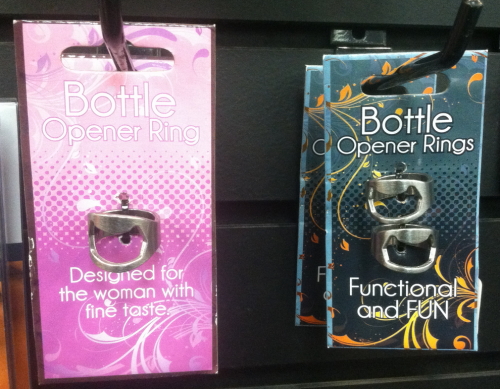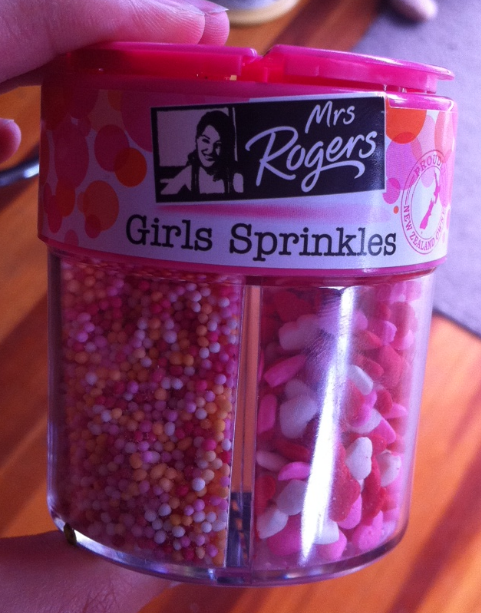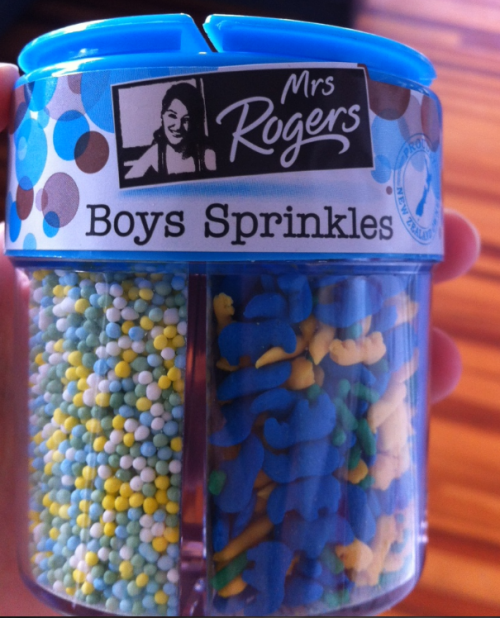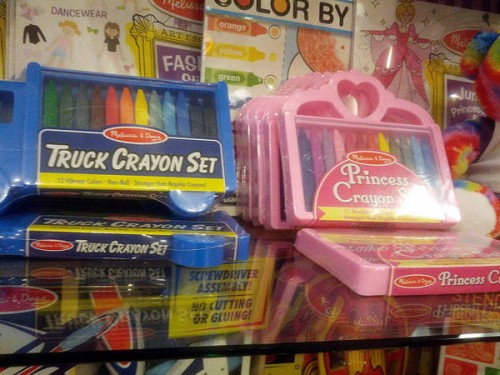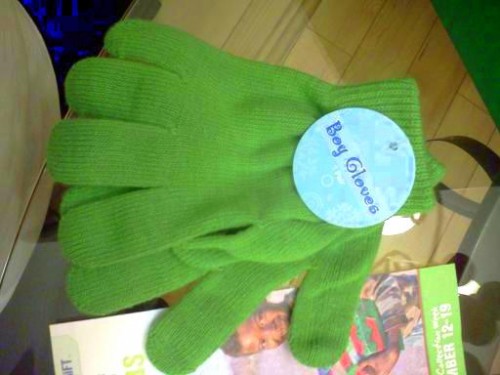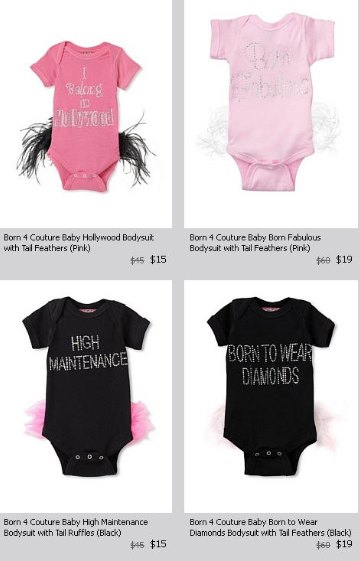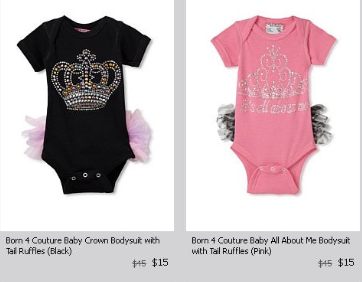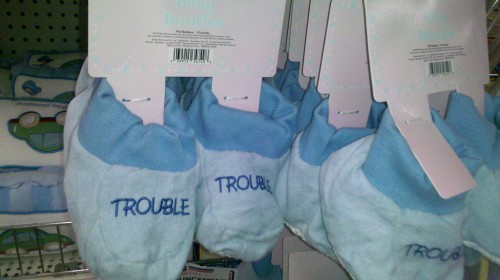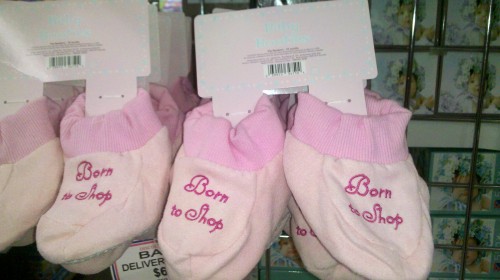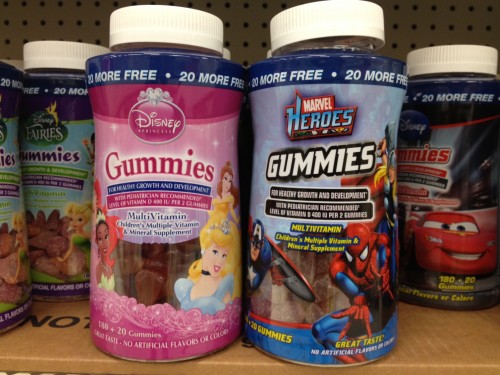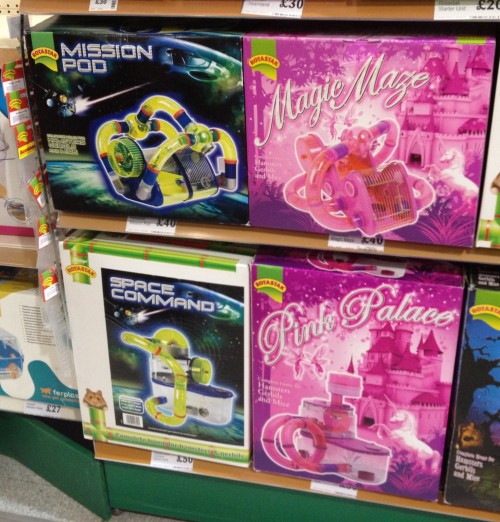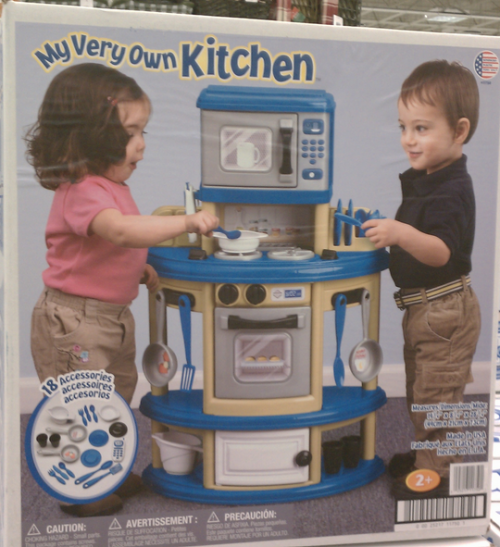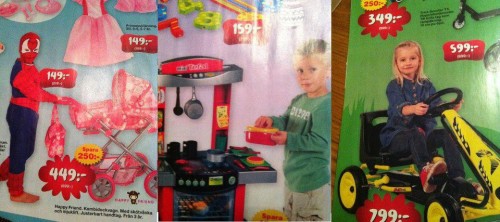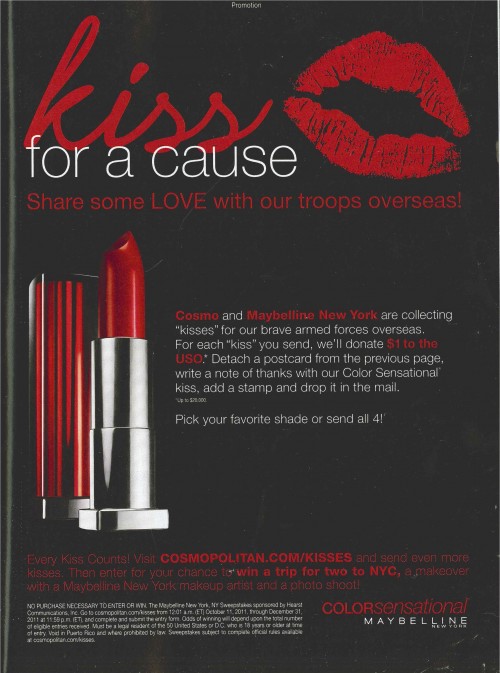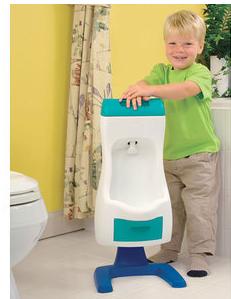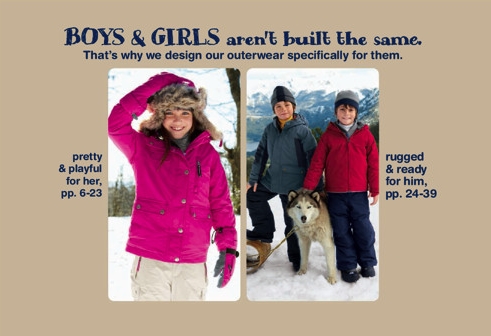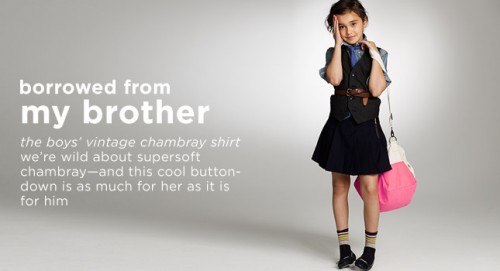Readers have submitted some great examples of gendered items in the last few months, so I’ve collected just a few here. This includes “the first gender-based wholefood,” certainly a milestone worth commemorating, so let’s get to it!
An anonymous reader pointed out that Barnes & Noble has book collections for boys and girls:
The summaries of the books reinforce ideas about gender and especially the association of boys with action and girls with relationships. The description of the boys’ collection mentions “excitement” and “tales of action, adventure, and exploration”:
The girls’ collection, on the other hand, includes “heartwarming tales” that teach us that “friendship is the most priceless and enduring gift of all”:
Nora Goerne sent in girls’ and boys’ pasta she saw in Dutch supermarket Albert Heijn:
And Emily discovered you can get gender-specific yogurt for kids:
Nick O. noticed these bottle-opener rings, one of which is marketed to women by putting it on a pink background with the word “woman” on it but otherwise seemed the same to Nick:
Carrie J. sent in this ad for gendered kids computers from 1999:
Shara found boys’ and girls’ cake sprinkles in New Zealand:
CBH was looking for birthday supplies on the Party City website and noticed that according to the decorations, by their first birthday girls are already “angels” and boys are “rebels”:
Helen S. sent us this image posted at Boing Boing of crayon sets that are implicitly gendered through the use of the colors and terms (especially “princess”) that have become codes for boys and girls:
Green gloves are apparently for boys now (thanks, Michelle):
And finally, as promised: You will be relieved to know that “the first gender-based wholefood” is here, and not a moment too soon. According to the website for Sexcereal — no, stop laughing, this is serious — the female version supports “hormonal balance” while the male version has ingredients that “support testosterone and then some,” which actually makes me afraid this product might cause ‘roid rage if eaten too often:
Their website (sent in by Vanessa K.) is an absolute delight, and provides many a hearty laugh. It’s just too bad Sexcereal is only available in Canada. All of us non-Canadians are stuck eating our stupid unisex cereals, leaving our hormones unbalanced and our testosterone feeling sadly unsupported, and then some.
Gwen Sharp is an associate professor of sociology at Nevada State College. You can follow her on Twitter at @gwensharpnv.







